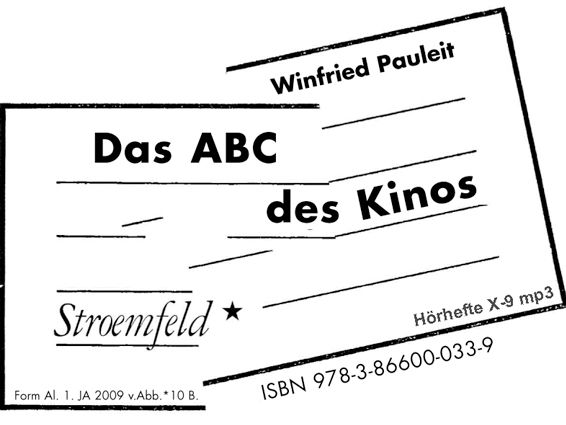Research Projects
German Comedy after the Third Reich

Political Aesthetics and Entertainment in Transitional Films
The research project aims to examine German feature films of 1944/45 that were completed or premiered only after World War II. These so-called transitional films are of utmost importance for film-theoretical and (film)historical contexts. The corpus of sixty-one films allows us to grasp both cultural and socio-historical continuities and ruptures between the Nazi era and post-war Germany. The project focuses in particular on comedies, which, with more than 30 productions, represent the most common genre of transitional films and thus, significantly impacted entertainment cinema after the 'Third Reich.'
Drawing from the aforementioned transitional comedies, the project aims to research how the intertwining of entertainment, politics, and aesthetics evolved during the 1940s and 1950s, a time of political and social upheaval. According to our thesis, transitional comedies can be analyzed as a missing link and in this sense present a broad spectrum from NS conforming up to subversive aesthetic potentials. Thereby, they connect the cinematic awareness of the late phase of National Socialism and the post-war period. The innovative core lies, on the one hand, in the integrative revision of transitional films that were previously mostly conceptualized as a homogeneous phenomenon, and on the other hand, in the analysis of these films in relation to New Film History, genre studies, and political aesthetics.
Visual History of the Holocaust
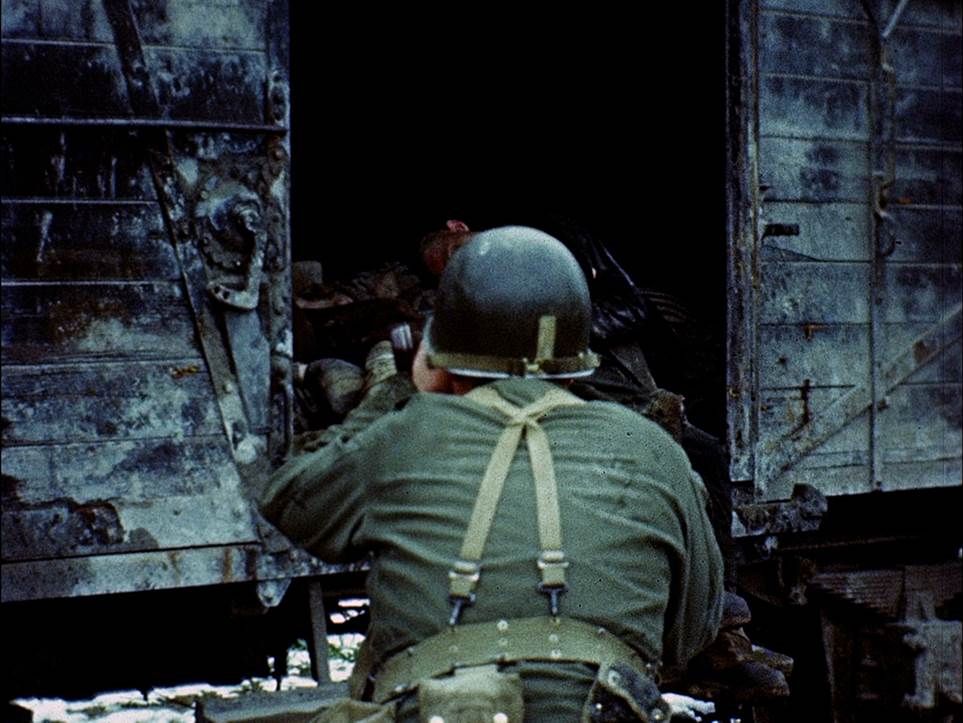
Rethinking Curation in the Digital Age
How do you digitally curate filmic records that bear witness to the darkest chapter in recent European history? The Holocaust has been a central reference point for European history and a ‘negative founding myth’ of European integration. Now that digital technologies and the internet have profoundly transformed our concepts of history and visual evidence the question of its representation becomes more pertinent. A consortium consisting of 12 Austrian, German, Israeli and French research institutions, museums, memorial sites and technology developers together with American partners will develop models and applications to respond to this challenge.
”Visual History of the Holocaust: Rethinking Curation in the Digital Age” is coordinated by the Ludwig Boltzmann Institute for History and Society (Vienna), in close collaboration with the Austrian Film Museum (Vienna). It will explore the potentials as well as the limitations of digital technologies in the ongoing effort to preserve, analyze and communicate historical evidence of the Holocaust, and in particular audiovisual records.
The project focuses on filmic records produced by Allied forces and relating to the discovery of Nazi concentration camps and other atrocity sites. Although these films only capture a certain aspect of the Holocaust, some of their images have become canonical. Due to the scarcity of visual records a few images, often presented out of context, have shaped our collective imaginary of the Holocaust. In the course of the project these historical films, which currently are dispersed across archival institutions in the US, Great Britain, Russia and other former Soviet Republics, will be aggregated, digitized, analyzed and annotated. The resulting digital repository will allow researchers to dynamically link film images with photographs, text-based documents and oral histories, as well as with images from subsequent filmic representations of the Holocaust.
”Visual History of the Holocaust” will make groundbreaking use of existing and emerging technologies, including advanced digitization, automated analysis of images and text, time-based annotation and location-based services. It is an aim of the project to establish new contexts of meaning to be explored in history, film and media studies, cultural studies and computer science. Based on this technology-enabled research new communication strategies will be developed for memorials, museums and educational institutions. The project is supported by a number of memorial institutions, three of them being part of the consortium: Dachau Concentration Camp Memorial Site, Mauthausen Memorial, and Bergen-Belsen Memorial.
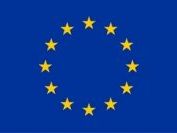
This project has received funding from the European Union's Horizon 2020 research and innovation programme under grant agreement No 822670.
Duration:
2019-2022
Contact:
Prof. Dr. Winfried Pauleit
pauleitprotect me ?!uni-bremenprotect me ?!.de
The face in film an media art
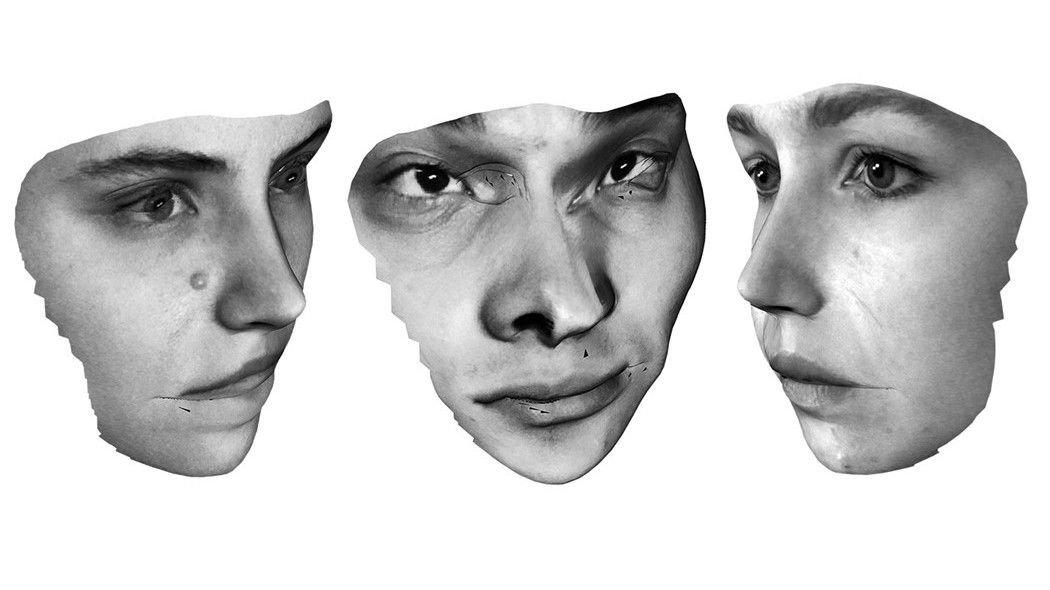
as an aesthetic game with identity and criticism of security systems
The project explores the reflection of biometric facial recognition and algorithmically controlled security dispositions in contemporary photography, film and media art.
In the process, the (audio) visual game with human identity in interaction with network-controlled surveillance technologies is examined as an explicit criticism of the endeavor to achieve a complete capture and control of humans. The aesthetic reflection and reproduction of monitoring mechanisms expresses a discomfort with the technology used as a tool for the equipment and handling of people.
The aesthetic strategies of different artists are to be read as representations of a "facial society" (Thomas Macho), which primarily acts through the recognizability and representation of faces. The portrayal of human identity shifts to medial recorded and edited faces. At the same time, computer-assisted biometric facial recognition technologies are being established, such as those already in use at public places such as train stations and airports for comparison with detected offenders. Based on the theory of cultural theory for the representation of the face, the project investigates artistic strategies in dealing with facial media representations and their critique of digital security systems.
Exemplary, the photo series spirit is a bone created in 2013 by the British photographers Adam Broomberg and Oliver Chanarin, who used a Russian surveillance technology to generate (phantom) faces, will be analyzed exemplarily. The photographers consciously place their series in the context of the history of photography in order to capture the human physiognomy for the purpose of typifying and categorizing the external appearance with the aim of the precautionary recognition of offenders (Lombroso, Bertillon). The face is analyzed as the interface of a multitude of aesthetic and media-specific discourses and conflicts. Perspectively, this project is about creating an interdisciplinary bridge between a culture-historically oriented art and media science and a technology-based information research. The project is made possible by the Central Research Funding (ZF) of the University of Bremen.
Focus project | Zentrale Forschungsförderung (ZF) University of Bremen
Duration:
2019-2022
Contact:
Prof. Dr. Winfried Pauleit
pauleitprotect me ?!uni-bremenprotect me ?!.de
Dr. Rasmus Greiner
rgreinerprotect me ?!uni-bremenprotect me ?!.de
Florian Flömer
floemerprotect me ?!uni-bremenprotect me ?!.de
Film Aesthetics and Childhood
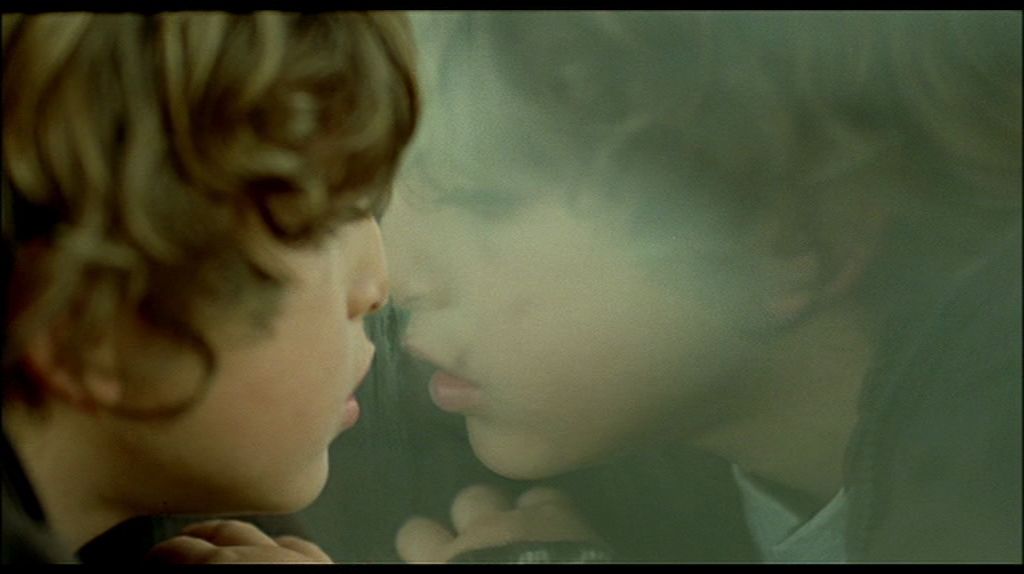
Since cinema's dawn, childhood is a widespread cinematic motive recurring in film theoretical and cinephile discourses. The complex childhood and film reaches a broad spectrum of issues concerning aspects of film education and mediality, so audiences, biographic dimensions of film experience, representation of children in the movies as well as the film's specific aesthetics.
Being engaged primarily from a pedagogical perspective so far, so regarding the filmic influence or the genre of children's films, my focus in contrast lies on film scholarly exploration of childhood as category of film aesthetics and film theory.
She is currently working on a research project on "Film Aesthetics and Childhood" with a main focus on French and German auteur cinema. (see DFG).
Duration:
2015-2018
Homepage:
Contakt:
Dr. Bettina Henzler
henzlerprotect me ?!uni-bremenprotect me ?!.de
Audiovisual Histosphere

The project explores the historical film as a cinematically modeled space-time structure in which film images and film sounds make history tangible and experienceable. The innovative core of the audiovisual histosphere lies in the integrative processing of the previously largely monolithic juxtaposed theoretical reflections on film and history, the specifics of film as a combination of moving images and sound, historical experience and the role of film as a medium of historical reflection.The project was funded for three years by the German Federal Ministry of Education and Research (BMBF) as part of the program “Small Subjects – Great Potential.”
Duration:
2017-2020
Contact:
Dr. Rasmus Greiner
rgreinerprotect me ?!uni-bremenprotect me ?!.de
Promoted by the Bundesministerium für Bildung und Forschung (BMBF)
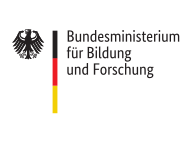
Audio History
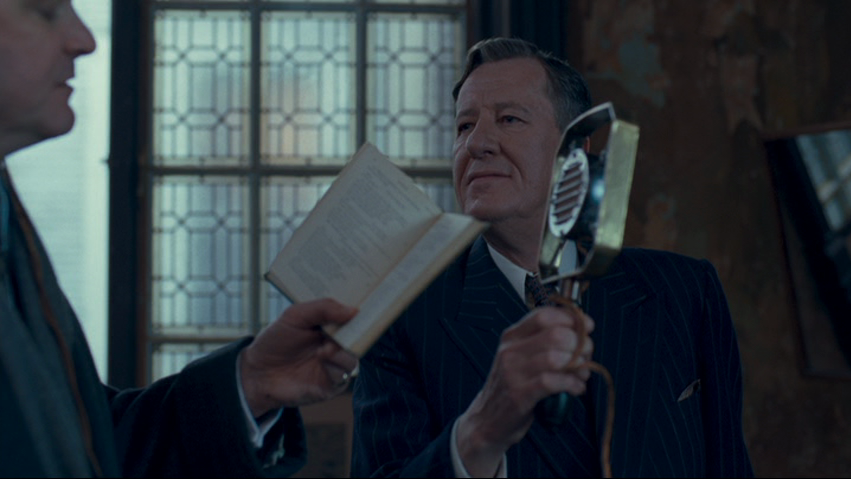
How Film Sound Produces History
This proposal investigates how history is generated in auditory terms, modeled and conveyed experientially by film sound and thus represents an extension of existing approaches relating both to the cinematic narration of history and visual history.
The proposal’s innovative core stems from the hypothesis that the acoustic dimension of film makes its own unique contribution to the modeling of history. Unlike the cinematic narration of history and / or visual history, the audio history of film has yet to be examined in any detail. Although sound has developed into a relevant research field within film studies and its study has also recently been established as an independent discipline referred to as sound studies, the historical reference points of sound production in film as well as its significance in the production of historicity have not yet formed an independent subject of research.
Within historical research, the narration of history has described and reflected upon as a poetological process, while visual history, which carries out research on film and visual images, has been regarded as a specific procedure within this wider discipline. Yet such approaches do not examine the auditory dimensions of film in independent terms but rather focus exclusively on its visual qualities. This research gap forms the starting point for this proposal, which explores how history may be generated in auditory terms, modeled or conveyed experientially by film sound. The focus here is on creating a theoretical framework for the audio history of cinema. This involves both examining the aesthetic dimensions of sound and its potential for producing history as well as looking at the material, technical and cultural dimensions of film sound production with regard to methods of historical modeling.
The goal of the proposal is to establish the significant role played by film sound in the production of history in suitably prominent fashion. This proposal is carrying out work of a truly pioneering nature within film studies and also carries the prospect of becoming a highly innovative approach for tackling the interdisciplinary field of film studies and history.
Duration:
2014-2015
Exploration Project on new topics
Contact:
Prof. Dr. Winfried Pauleit
pauleitprotect me ?!uni-bremenprotect me ?!.de
Dr. Rasmus Greiner
rgreinerprotect me ?!uni-bremenprotect me ?!.de
Prof. Dr. Mattias Frey
University of Kent, England
Senior Lecturer Film
mjf39protect me ?!kent.acprotect me ?!.uk
in Kooperation mit:
Prof. Dr. Delia González de Reufels
Institut für Geschichtswissenschaft
Schwerpunkt Geschichte Lateinamerikas
Fachbereich 8 - Sozialwissenschaften
Universität Bremen
dgrprotect me ?!uni-bremenprotect me ?!.de
Web-based Documentary Film
Web-based Documentary Film Between Discourse, Technology, and Community Building: the Pragmatic Turn
Recent advances in digital technology (in particular the advent of new media platforms, such as the Internet, mobile phones, tablet computers and GPS devices) as well as a strong sociocultural demand for participation, are significantly influencing and altering the concept, design, reception, production and distribution of non-fiction audio-visual works. These new developments have paved the way for the emergence of an increasingly popular new cinematic form hosted on new media platforms: interactive documentaries, which break the classic linearity of film into fragmented space/time productions.
The project focuses on the interactive documentary form created for the web from a broad pragmatic perspective which helps us to better understand, especially in terms of communicative co-operational structures, authorship, spectatorship and realism, this very contemporary and under theorised area of non-fiction media production.
Duration:
2014-2017
Contact:
Dr. Stefano Odorico
Leeds Trinity University
Associate Senior Lecturer
s.odoricoprotect me ?!leedstrinity.acprotect me ?!.uk
Film Stills

Film stills show the film at his site-cut, just like in a butcher's show case.
Film stills are film industry's photographs of utility or advertising media. Some get to an iconic or fetishized status. For sure, they can be compared to an inspection of meat: the display cabinet is showing the film at his site-cut, just like in a butcher's show case. Film stills accompany a film screening preparing it and grieving for it.
Science Fiction Cinema and the European Union
Representation, Production, and Audience Reception
Examining select European science fiction films, while analysing key facets of production, this project questions dystopian representations of the European Union in light of prevailing concerns over social, political and economic crises. Long seen as a genre that thrives in moments of political uncertainty, sci-fi frequently displays a fixation on social allegory and has "been instrumental in visualizing" salient modern fears such as "disorientation, powerlessness, fragmentation, disintegration, loss of boundaries, and hybridization" (Claudia Springer, Psycho-cybernetics in Films of the 1990s). As such then, it is ideally placed to comment upon the EU, which is coming through a level of economic, political and social upheaval unseen since the cessation of the Second World War.
Evaluating a broad cross-section of films from a number of European nations, this project charts the film industry’s response to this crisis and comprises both analysis of production considerations and close textual readings of films. With a special focus on sci-fi, the project studies the industry’s reaction to events in the EU, determining how vital factors including production and distribution impact upon its ability to function, react to and comment upon the affairs of contemporary Europe.
Key concerns include evaluations of the sci-fi of different regions, of national and transnational output and patterns of representation of the EU itself from the year 2000 onwards. Additionally, the re-imagination of Europe and its people in dystopian worlds or alternate realities is scrutinised in order to better understand salient social and political concerns amongst "real" populations.
With specific relation to the EU, the project examines discrepancies between centralised and local funding and between the output of ‘marginal’ and ‘core’ countries, identifying how generic tropes of sci-fi are deployed to address distinctly local concerns.
Duration:
01/ 2013 - 12/ 2014
Conception:
PhD Aidan Power
powerprotect me ?!uni-bremenprotect me ?!.de
Hosting faculty:
Department 09 - Cultural Studies
Film and media studies, film education, media education
Prof. Dr. Winfried Pauleit
pauleitprotect me ?!uni-bremenprotect me ?!.de
Tel.: +49 (0)421 218 67720
Muslim Women Filmmakers
Towards a New Feminist Cinematic Resistance Movement in the Muslim World: Women Filmmakers: Pakistan, Iran, and Afghanistan
A Comparative Study
The interdisciplinary research focuses on a comparative study of the work of independent Muslim feminist women filmmakers from Pakistan, Iran and Afghanistan, who, since the late 1970’s, have shared similar, yet varying, histories of politically motivated Islamization (Pakistan), Islamic Revolution (Iran), and Talibanization (Afghanistan) in their respective countries.
As these women filmmakers have revisited their particular histories to present a counter-history of developments and practices, particularly those instigated by fundamentalist forces on the pretext of religion, my study will chart and establish the emergence of a Feminist Cinematic Resistance Movement that can be seen as an anti-fundamentalist "cinema for change" - one that is pioneered by Muslim women from these societies that have a shared history of fundamentalist ideologies, and state imposition of rigid Sharia laws that have particularly targeted women’s rights and freedoms. The work examines the contribution of these Muslim women filmmakers who have boldly defied socio-cultural, political, and religious constraints in some of the most hostile environments and conservative societies, and chosen film as their medium to question various forms of oppression in their respective countries.
Additionally, the study aims to evaluate the significance of these productions as pedagogical tools for consciousness-raising, cross-cultural communication, and filmic activism to garner support for social change and legal reforms in these countries.
The interdisciplinary research is part of a book project that bridges film studies, women's / feminist studies, religion / Islam and culture in Muslim societies, history, and cross-cultural communication with a focus on gender and human rights issues, and feminist cinematic activism and resistance by Muslim women filmmakers.
Duration:
10/ 2013 - 09/ 2015
Conception:
PhD Rahat Imran
raiprotect me ?!sfuprotect me ?!.ca
Hosting faculty:
Department 09 - Cultural Studies
Film and media studies, film education, media education
Prof. Dr. Winfried Pauleit
pauleitprotect me ?!uni-bremenprotect me ?!.de


